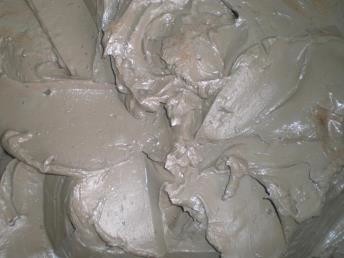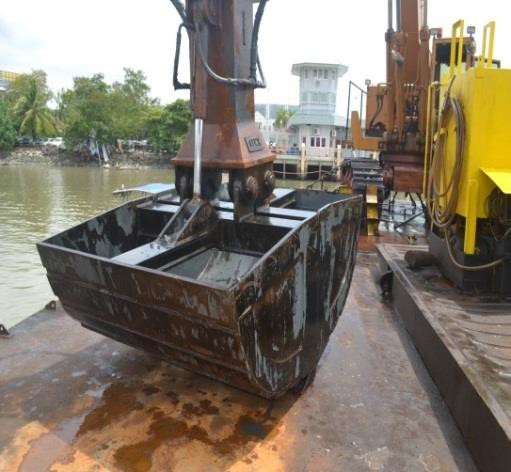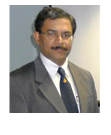Reusing Dredged Marine Sediments for Sustainable Civil Engineering Applications
INTRODUCTION
vicinity of the disposal sites with uncontrollable widespread propagation. On the other hand, taking into account the material being essentially soil-based, with the primary constituents of sand, silt and clay with some larger marine debris, it is perhaps most apt to harness its inherent properties as a ‘soil’ and reuse it as a geo-material. In civil engineering and construction terms, this would involve reusing the soils as backfill materials, for creating artificial land or restoring eroded ones in near-shore areas, for instance. Indeed, reuse of the marine geowaste simultaneously addresses the short and long term disposal issues, and contributes to the favourable practice of sustainable development in general. This workshop puts the recycling and reuse of dredged marine soils into practical engineering context, with a comprehensive review of the physical, chemical, biological and mechanical fundamental characteristics of the material, giving the ‘green’ exercise an all-round consideration for beneficial second lives.
 Soft, ‘useless’ dredged marine soils.
Soft, ‘useless’ dredged marine soils.
 Dredged marine sediments being retrieved from shallow waters with a clamshell dredger.
Dredged marine sediments being retrieved from shallow waters with a clamshell dredger.
SCOPE
The workshop covers definition of the dredged marine soils from all relevant aspects, the tests and measurements involved to identify the properties and behaviour, the up-to-date test results and findings, the application process as well as effective in situ implementation via a strategic technology management framework.
TOPICS
- Origin and formation of dredged marine soils
- Dredging operations: mechanism and impact
- Dredged marine soils’ inherent PHYSICAL properties
- Dredged marine soils’ inherent CHEMICAL properties
- Dredged marine soils’ inherent BIOLOGICAL properties
- Dredged marine soils’ inherent MECHANICAL properties
- Treatment for improvement of engineering properties
- Field implementation and monitoring
- Strategic technology management framework for efficient reuse of the treated materials
DISCUSSIONS
- Sources and receptors of contaminated dredged marine soils: complexity of exposure pathway.
- Current handling / disposal of dredged marine soils: risks and uncertainties.
- Long and short term impact: environmental and human health.
- Financial benefits of reuse vs. disposal.
- New treatment methods.
- Toxicology.
JUSTIFICATIONS
The advancement of dredging machinery and technology should be accompanied by similar extensive development and deployment of effective, efficient and sustainable handling of the dredged materials, which includes recycling and reuse of the material. So far, much is reported and achieved in the former, but less is said of the latter. This workshop also attempts to raise the awareness of related industrial players on the background research in this direction, to engage them in a symbiotic partnership of handling, managing and reusing the dredged materials. If nothing else, the workshop would at least have informed the participants of existing potential solutions and possibilities for giving a second life to the often forgotten clay’s cousin: fine-grained dredged marine soils.
Presiding Officer
- Prof. Dr. Devendra Narain Singh
- Prof. Zoubeir LAFHAJ
Prof. Devendra Narain Singh
 Prof. Singh is an Institute Chair Professor at Department of Civil Engineering, Indian Institute of Technology Bombay, India. He obtained B. Tech., M. Tech. and Ph. D. from Indian Institute of Technology, Kanpur, India, during 1986, 1989 and 1993, respectively. He mainly researches and practices Environmental Geotechnology an upcoming field in the realm of Civil and Geotechnical Engineering. His research is multidisciplinary and focused on ‘geomaterials characterization’ by employing various energy fields. In the process he and his research group has successfully evolved several ‘need-based’ instrumentation that have become panacea for dealing with the issues being faced by the contemporary society due to rapid and uncontrolled industrialization. He is Editor-in-Chief of Environmental Geotechnics, a journal published by the Institution of Civil Engineers, UK. He is recipient of Young teachers’ award (instituted by the AICTE, New Delhi), 2003 SP Research Award (instituted by Shamsher Prakash Foundation, Rolla, MO, USA); John R. Booker Excellence Award-2011 (instituted by IACMAG, USA) and Richard Feynman Prize 2014 (instituted by the ICE, UK). He is a fellow of American Society of Civil Engineers (ASCE).
Prof. Singh is an Institute Chair Professor at Department of Civil Engineering, Indian Institute of Technology Bombay, India. He obtained B. Tech., M. Tech. and Ph. D. from Indian Institute of Technology, Kanpur, India, during 1986, 1989 and 1993, respectively. He mainly researches and practices Environmental Geotechnology an upcoming field in the realm of Civil and Geotechnical Engineering. His research is multidisciplinary and focused on ‘geomaterials characterization’ by employing various energy fields. In the process he and his research group has successfully evolved several ‘need-based’ instrumentation that have become panacea for dealing with the issues being faced by the contemporary society due to rapid and uncontrolled industrialization. He is Editor-in-Chief of Environmental Geotechnics, a journal published by the Institution of Civil Engineers, UK. He is recipient of Young teachers’ award (instituted by the AICTE, New Delhi), 2003 SP Research Award (instituted by Shamsher Prakash Foundation, Rolla, MO, USA); John R. Booker Excellence Award-2011 (instituted by IACMAG, USA) and Richard Feynman Prize 2014 (instituted by the ICE, UK). He is a fellow of American Society of Civil Engineers (ASCE).
Prof. Zoubeir LAFHAJ
 Pr. Zoubeir LAFHAJ, PhD in Civil Engineering. He is Full Professor at the M. Eng. Graduate School of Engineering at Ecole Centrale de Lille, - French Grande Ecole, and former Dean of International affairs and member of the Executive Committee of the School (2008 -2015), responsible for the track (Planning, Construction and Environment).
Pr. Zoubeir LAFHAJ, PhD in Civil Engineering. He is Full Professor at the M. Eng. Graduate School of Engineering at Ecole Centrale de Lille, - French Grande Ecole, and former Dean of International affairs and member of the Executive Committee of the School (2008 -2015), responsible for the track (Planning, Construction and Environment).
Prof. Zoubeir LAFHAJ also develops a strong network of technology and knowledge transfer in national and international companies. He was elected as a member of the Board of Directors in the Competitiveness Cluster Team² (environmental technologies applied to materials and materials). He launched collaborative contracts and multiple partnerships with international and regional companies to participate in their development R & D and industrial leadership.
Prof. Zoubeir LAFHAJ has 5 strategic Research thematic:
- Pr. Zoubeir LAFHAJ has been working for years on the theme of industrialization in construction. Among its projects, "Industry 4.0 in Construction" financed by ADEME. "Industry 4.0" is characterized by continuous and instant communication and exchange of information between the various tools and workstations integrated in the production and supply chains. This research axis aims to develop this concept in construction.
- He has also realized several projects related to "3D printing" in the construction sector, notably the one with BOUYGUES Company: Project "Prototype 3D printing for construction". This project is a pioneer in France.
- "Energy Efficiency". This Research axis is critical since the building sector is the first major consumer of national energy with about 44% of the final energy and contributes nearly a quarter of the national greenhouse gas emissions.
- Along with the largest energy consumption, the construction has the lowest productivity among all existing industries. This challenge has led Prof. Zoubeir LAFHAJ to consider new approaches to improving the construction sector, thus the Research thematic of "Lean Construction"
- "Prospection of innovative materials, characterization and reuse in civil engineering”: examples are: self-healing materials, geo-polymer-based materials, intelligent materials that are designed to have one or more properties that can be significantly altered in a controlled manner by external stimuli (such as stress, temperature, humidity…) and which can be introduced in civil engineering to substantially improve the building and the of the inhabitant’s experience.